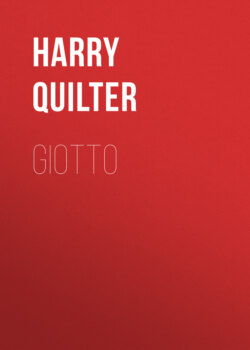Читать книгу Giotto - Harry Quilter - Страница 4
На сайте Литреса книга снята с продажи.
ILLUSTRATIONS.
ОглавлениеTable of Contents
| PAGE | |
| The Unknown Madonna at Assisi. Attributed to Giotto | —Frontispiece |
| The Madonna Enthroned. By Cimabue. In the Rucellai Chapel, S. Maria Novella, Florence | 36 |
| Pastoral Life. By Giotto. Bas-relief on the Campanile, Florence | 42 |
| Padua. From a Drawing by the Author | 71 |
| Paradise. By Giotto. (Greatly restored.) In the Arena Chapel, Padua. Photograph | 74 |
| Joachim retires to the Sheepfold. By Giotto. In the Arena Chapel, Padua. Wood Engraving | 76 |
| The Entombment of Christ. By Giotto. In the Arena Chapel, Padua. Photograph | 80 |
| The Resurrection. "Noli me Tangere." By Giotto. In the Arena Chapel, Padua. Photograph | 82 |
| Justice. By Giotto. In the Arena Chapel, Padua. Photograph | 84 |
| The Church at Assisi. From a Drawing by the Author | 97 |
| View of Florence, showing Giotto's Campanile and the "Duomo" | 135 |
| The First Arts. By Giotto. Bas-relief on the Campanile | 140 |
| Riding. By Giotto. Bas-relief on the Campanile | 142 |
"As in passing through life we learn many new things, so do we forget many old things, and gradually the remembrance of them is lost from among men. Therefore those persons do not reason well who do not study to perpetuate useful things by writing, because in such case posterity will hereafter seek in vain for their origin, perfection, and use."—Tambroni.
"Such as are ignorant of things done and past before themselves had any being continue still in the estate of children, able to speak and behave themselves no otherwise; and even within the bounds of their native countries (in respect of knowledge or manly capacity) they are no more than well-seeming dumb images."—From the Dedication of an anonymous translation of Boccaccio's Novels, &c. 1634.
"And so it is with all truths of the highest order: they are separated from those of average precision by points of extreme delicacy, which none but a cultivated eye can in the least feel, and to express which all words are absolutely meaningless and useless. Two lines are laid on canvas, or cut on stone: one is right and another wrong. There is no difference between them appreciable by the compasses—none appreciable by the ordinary eye—none which can be pointed out if it is not seen. One person feels it, another does not; but the feeling or sight of the one can by no words be communicated to the other. That feeling and that sight have been the reward of years of labour."—John Ruskin. 1853.
"I offer this little work as long as I live to the correction of those who are more learned. If I have done wrong in anything I shall not be ashamed to receive their admonitions; and if there be anything which they like, I shall not be slow to furnish more."—Wilhelm of Bamberg, circa 1000 A.D.
